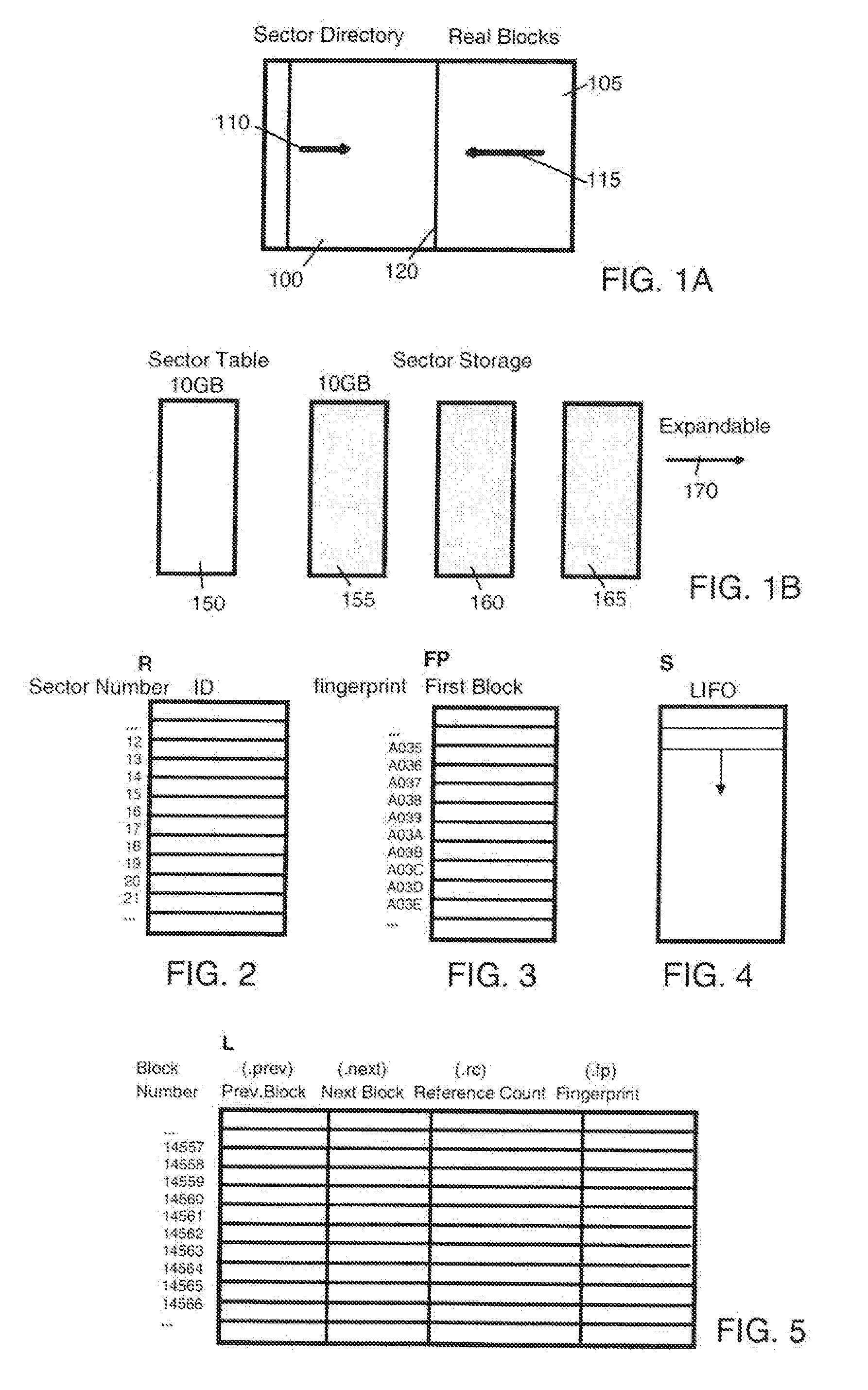Reducing occupancy of digital storage devices
a technology of digital storage device and occupancy reduction, applied in memory systems, memory address/allocation/relocation, instruments, etc., can solve the problems of data consistency, inability to change by low-level formatting the drive, and inability to address the reduction of storage occupancy of stored user data, etc., to achieve the effect of minimizing data occupancy
- Summary
- Abstract
- Description
- Claims
- Application Information
AI Technical Summary
Benefits of technology
Problems solved by technology
Method used
Image
Examples
Embodiment Construction
[0041]FIGS. 1A and 1B schematically show the available storage space of a storage medium of an underlying storage device, the storage space being arranged in accordance with the invention. The underlying storage device, as mentioned above, can be any storage device storing information in continuous data blocks like sector-oriented magnetic hard disk drives, optical disk drives or tape storage devices, and even semiconductor storage devices emulating or virtually realizing hard disk drives like solid hard disks or RAM disks.
[0042]FIG. 1A, more particularly, illustrates how the underlying storage medium is segmented into two different storage areas 100, 105, separated by a divider 120 shown for illustrative purposes. The first area 100 containing a sector directory (e.g. implemented as a table or the like) used for operational administration of the underlying storage device according to the mechanism described hereinafter and the second area (‘Real Sector’) 105 representing physical s...
PUM
| Property | Measurement | Unit |
|---|---|---|
| length | aaaaa | aaaaa |
| area | aaaaa | aaaaa |
| time | aaaaa | aaaaa |
Abstract
Description
Claims
Application Information
 Login to View More
Login to View More - R&D
- Intellectual Property
- Life Sciences
- Materials
- Tech Scout
- Unparalleled Data Quality
- Higher Quality Content
- 60% Fewer Hallucinations
Browse by: Latest US Patents, China's latest patents, Technical Efficacy Thesaurus, Application Domain, Technology Topic, Popular Technical Reports.
© 2025 PatSnap. All rights reserved.Legal|Privacy policy|Modern Slavery Act Transparency Statement|Sitemap|About US| Contact US: help@patsnap.com



